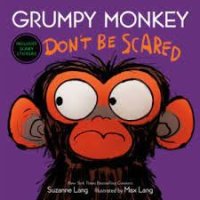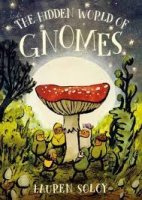“Like the FBI, and the CIA, and the BBC BB King, and Doris Day My folks say…” Lennon/McCartney, “Dig It” “Low down. Way down. Under ground. Creatures dig and run around.” I love how Denise Fleming interweaves art and poetry with nonfiction to give us a look at what is under our feet. I really dig underGOUND. Digging underground is something I’ve done plenty of in my life. As a kid working on the family construction sites, I was sometimes handed a shovel and given the task of backfilling the side of a house under construction where there was only a five-foot clearance between the foundation and the neighbor’s fence.
In Scouts, I was sometimes handed a shovel and given the honor of digging a latrine. On several occasions I’ve dug out the ditches alongside my long driveway in Sebastopol. I’ve dug holes for far more than my fair share of baby fruit trees and live Christmas trees. And when I created a new vegetable garden last year, I dug a perimeter trench thirty inches deep around the beds so that a roll of hardware cloth could be buried vertically, providing a barrier against the pesky pocket gophers (who, fortunately, limit their excavating to the top eighteen inches).
There are no pocket gophers to be found in Denise Fleming’s underGROUND, but there are nearly two dozen other critters having to do with digging in and/or living in the ground. We see them in action as we traverse the pages of Fleming’s poetic text and, then, a Creature Identification spread at the conclusion of the story gives us some facts on each of them. There are also a variety of man-made objects to be seen underground. I’ve had lots of fun experiences, both as a child and as an adult, digging around old, fallen-down structures, playing archeologist, finding coins, old tools, and other treasures underground. Watch for them here.
As is the case with Denise Fleming’s other eye-catching picture books (so many of which similarly reflect the beauty of nature), the illustrations here are crafted through a papermaking technique employing colored cotton fiber poured through hand-cut stencils. (Denise demonstrated this technique for a bunch of young students at a bookstore event I hosted years ago. Therefore, I can tell you from experience that she does a superb presentation.)
So, if you want the low down on the underGROUND, this is the book for you. Dig it? Recommended by: Richie Partington, Librarian California USA See more of Richie's Picks at: https://richiespicks.com_ (https://richiespicks.com/)
*********
Underground is a world often unseen by adults and children. Denise Fleming’s new book identifies the various animals that nest and hide food underground. Did you know that most rabbits do not dig their own holes? They often dig shallow holes or use other holes abandoned by woodchucks or chipmunks. Foxes, too, are known to use the woodchucks’ old digs to raise their young.
Other species that live at least part of their lives underground include the Trapdoor spider, salamanders, toads, and moles. The creature identification pages feature a picture of each creature and how they use their holes underground: for food storage, living quarters, and nurseries for their young.
The illustrations in the book are made using pulp painting which is a papermaking technique using cotton fiber that is then poured through hand-cut stencils. Finally, the artist adds details using pastel pencils and copy transfer. The effect is a beautifully rendered picture that feels and looks like a painting done in pastels, watercolors, and pencils. The attention to detail is remarkable; the animals are beautifully rendered, and the furry ones seem cute and cuddly even when digging in the dirt.
The cover showing a wide-eyed boy watching ants disappear underground will captivate. What child hasn't watched ants marching and wondered where they went when they disappeared underground?
The copy rhyme and rhythmic pattern is perfect for early readers. Children will quickly pick up the wording of this book and likely “read” it to themselves after only a few readings.
This is a must have for any collection of picture books.
Highly, highly recommended ages 3-up. A fun read aloud.
Recommended by: Pamela Thompson, Librarian, Texas USA
See more of her recommendations:visit 2012 High School Blog of the Year https://booksbypamelathompson.blogspot.com/






